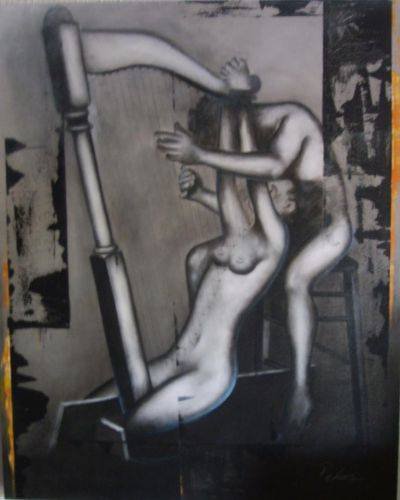Walter Benjamin
When I hear the word apparatus in a text I suddenly get interested. “The apparatus!” It sounds imposing. It is actually. In the Kafka story we read a few weeks ago, that word is in the first line. And we saw what that apparatus ultimately was meant to do and actually made happen: it inscribes language deep into the tissue, but interesting, not into the tissue of who is being inscribed upon, rather than who is watching, or reading; it also represses, dominates, kills, the body. We also saw this word in Althuser. He called them the Ideological State Apparatuses and Repressive State Apparatuses. These, just like in Kafka, serve the function of a sort of molding, manipulating, and keeping in place, in running order. The ultimate function of these is restricting the body, limiting its possible bodily actions; it is a restriction and harboring of its natural destructive force. When the ideas (the ISA in Althuser), unnoticed mental rules, that are imposed (educate), that are meant to impose, do not actually have an effect on a given subject (body), then the repressive arm (the RSA) is sent in to physically handle the disorder. Walter Benjamin also uses this word in “The Work of Art in the Age of its Technological Reproducibility.” He uses the word in reference to the camera. The camera is that for witch the actor is performing. The camera is a technological artifact. It is one of the materials that will impulse and facilitate the technological reproducibility. It will reproduce artificiality; a manipulation of the performance as opposed to the stage actor in a play. It is interesting then, the sort of appropriation that technology can assume. That apparatus has consumed the human, the body. The human dances not to entertain other humans but the camera; the camera (and the microphone) is that which requires the human to move. The camera therefore alters him; makes him use his body and feel in ways he wouldn’t otherwise. But then there is other end of that apparatus. It also captures who is viewing. The television! That is the other apparatus. (In Benjamin’s days this was probably less so.) Or is it the same one? I think both devises are part of the same apparatus. It is as Benjamin suggests, it demands a payment in “human material”. The apparatus here, just as in Kafka or Althuser appear to demand this, payment in “human material.”
